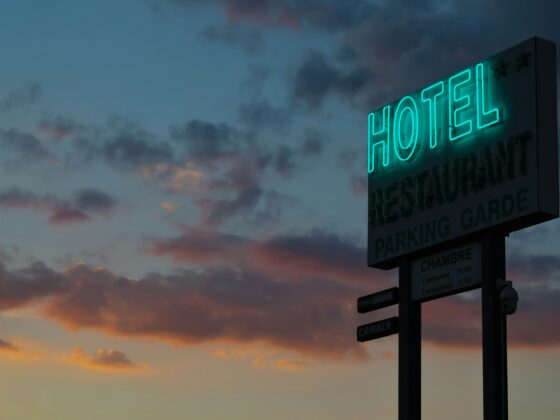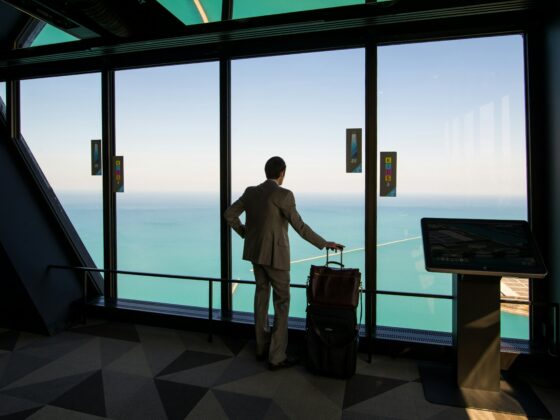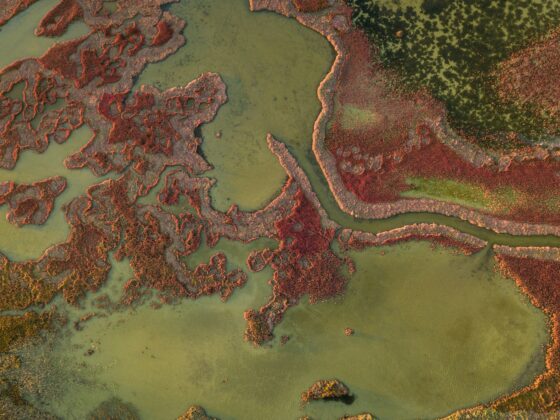What The White Lotus Gets Right And Wrong About Today’s Luxury Hospitality Industry
While HBO’s “The White Lotus” serves up a delicious satire of privileged guests unraveling in paradise, the actual luxury hospitality industry has long since evolved far beyond these one-dimensional caricatures.
While the show revels in revealing the juxtaposition of five-star settings and two-star human behavior, today’s elite resorts provide experiences that surpass simple hedonism. By incorporating elements of ethical practices, cultural exploration, and personal transformation into the DNA of luxury hotels and resorts, their owners are transforming what was once regarded as an empty extravagance into catalysts for personal growth and transformation—less about pampering neuroses and more about cultivating meaningful metamorphoses.
Fiction Versus Reality: The Restaurant Scene (Season 2, Episode 3)
The contrast between dramatic entertainment and operational reality is perfectly illustrated in Season 2, Episode 3’s pivotal restaurant scene at Principe Cerami (a real Michelin-starred restaurant but in a fake hotel).
The scene opens with Season 2’s fab four seated at a candlelit table in the restaurant’s al fresco dining area, surrounded by the hotel’s citrus gardens and panoramic views of the Ionian Sea—elements borrowed directly from the real-world Four Seasons San Domenico Palace. As we take in the opulent scenery, we can feel the simmering resentment between Harper and her husband Ethan, as well as their companions Cameron and Daphne, as they passively jab each other about infidelity and wealth. This is the showrunner’s scathing and highly entertaining critique of the neuroticism and social competitiveness of the young and wealthy.
As a piece of premium entertainment, the show masterfully captures the aesthetic details of this restaurant’s inspiring design, with its vaulted stone ceilings, Renaissance-era frescoes, and locally sourced ceramic tableware featuring traditional teste di moro motifs.
Waitstaff hover discreetly, refilling glasses of Etna Rosso wine without interrupting conversations—an authentic hallmark of the real Four Seasons’ rigorously trained table protocols. The characters’ obsession with securing prime dining reservations reflects real-world luxury travelers’ expectations. High-end resorts like San Domenico Palace routinely prioritize suite residents for coveted tables, creating implicit hierarchies among guests.
However, the real-world Four Seasons San Domenico Palace differs significantly from The White Lotus for dramatic effect. The show portrays a single restaurant as the focal point for guest interactions, whereas the real-world Four Seasons San Domenico Palace operates three distinct dining rooms, strategically dispersing guests to maintain exclusivity and ambiance. While the show’s fake staff oscillate between obsequiousness and indifference, real service-excellence protocols emphasize discrete, anticipatory attention—like the silent refilling of wine glasses that enhances rather than interrupts the dining experience.
This encapsulates a fundamental truth about high-end TV and modern luxury hospitality. While entertainment thrives on conflict, the industry’s cutting edge is increasingly defined by the artful curation of enriching experiences and personally transformative moments.
Cultural Storytelling: From Satire to Authentic Immersion
The White Lotus (the show) gets its narrative power from deeply rooted cultural contexts—whether through Sicilian aristocracy, Hawaiian traditions or now in Season 3, Thai spirituality. Each season’s setting becomes a character in itself, reflecting local heritage while satirizing guests’ often superficial engagement with these cultures.
The luxury hospitality sector has transformed this critique into opportunity through authentic cultural partnerships. The St. Regis Kanai Resort in Mexico’s Riviera Maya exemplifies this evolution through what the company calls “culturally anchored design,” incorporating Mayan cosmology into its architecture. Circular motifs reflect indigenous concepts of cyclical time, while elevated walkways integrate local ecology and wildlife habitats into the guest experience, creating opportunities for deeper connection with place and tradition.
This commitment to cultural authenticity extends beyond design to creating immersive experiences for guests. Canada’s Kwa’lilas Hotel, owned and operated by the Gwa’sala-‘Nakwaxda’xw Nations, demonstrates how luxury hospitality can transcend preservation to become a vehicle for genuine cultural exchange. The property’s cedar-built architecture resembles traditional longhouses, immersive workshops in cedar weaving and drum-making, and partnerships with Indigenous guides for cultural tours don’t just preserve heritage—they create opportunities for profound personal transformation through cultural understanding.
Operational Excellence: Beyond Fiction
Whereas the show portrays the sometimes-chaotic underpinnings of luxury service as entertainment, the industry has developed sophisticated solutions that transform operational challenges into opportunities for meaningful change.
Four Seasons Resort Tamarindo in Jalisco, Mexico, reimagines the luxury experience within a private nature reserve, achieving a 40% reduction in carbon emissions while educating guests about environmental stewardship through its locally sourced materials, solar energy, and water recycling systems. Similarly, Soneva’s Fushi resort in the Maldives makes waste management an enjoyable experience for guests, repurposing 90% of waste through composting and upcycling programs that engage visitors in the journey toward sustainability.
The industry’s commitment extends to wellness programming, with Mandarin Oriental achieving 87.6% guest satisfaction through partnerships with local herbalists and traditional healers. This focus on authentic wellness experiences reflects a broader trend: research shows that 67% of luxury travelers now prioritize hotels with zero-waste dining and carbon-neutral certifications, seeking experiences that transform their relationship with both wellness and sustainability.
Transformational Experiences: Science-Backed Innovation
While the show satirizes wealthy guests’ shallowness, the real world’s most innovative hoteliers are at work building evidence-based offerings designed to create moments of personal transformation. Six Senses Svart in Norway uses circadian-aligned architecture and biometric sensors to regulate guests’ sleep. The Equinox Hotel in New York, on the other hand, uses AI-powered wellness assessments to create fitness and nutrition plans tailored to each guest, resulting in 52% higher engagement after the stay.
This emphasis on wellness is transforming luxury properties, which now dedicate 30-40% of their floor space to health facilities. The Global Wellness Institute predicts that this market will be worth $1.1 trillion by 2025, driven by demand for medical-grade programs such as sleep labs and virtual reality meditation sessions—experiences designed not only to pamper but also to catalyze long-term personal change.
The “White Lotus Effect”: Media-Driven Cultural Aspiration
As other journalists have noted recently, the media and entertainment world has had a measurable and material impact on the revenues of the luxury hospitality industry. The St. Regis Kanai, for instance, saw a 210% increase in bookings after Architectural Digest featured its Mayan-inspired design. This shows how thoughtful, respectful cultural integration can lead to increased business growth and visitor engagement with local heritage.
Innovation Beyond Entertainment: Biophilic Tech and Sustainability
The future of luxury hospitality increasingly depends on the integration of sustainability and technology as transformational tools. Lefay Resorts in Italy uses geothermal energy for 85% of its heating needs, reducing reliance on fossil fuels by 70% while maintaining Forbes Five-Star standards. Meanwhile, Six Senses’ 2025 pipeline includes mycelium-based suites developed in collaboration with Ecovative, which are forecast to sequester 10 tons of CO2 per unit annually.
Leading urban luxury properties are also adopting biophilic technology, as evidenced by 1 Hotel Central Park’s air purification systems, which remove 99.9% of allergens, and SmartSleep beds, which adjust to guests’ REM cycles—innovations that transform the act of sleeping into a source of wellness.
Looking Forward: Embracing Complexity Through Transformation
Returning to that tensely amusing dinner scene at the fake Principe Cerami, we find the perfect metaphor for luxury hospitality’s central challenge. At The White Lotus, the complexity of people is used as entertainment. The real Principe Cerami achieves the same effect through harmonious sensorial experiences. For example, servers turn dessert into theater and sommeliers tell stories about volcanic soils. Every moment is carefully planned to bring people together instead of causing them to quarrel.
This contrast sheds light on how the story of luxury hospitality is changing. The show reminds us that no amount of careful curation can clean up human complexity completely. However, our industry is innovating by embracing all this interpersonal complexity through a phenomenon known as “transformational coherence.” Rather than attempting to hide the messy reality of human nature, leading hospitality brands are developing frameworks that recognize and channel it into personal growth opportunities for guests.
This shift reflects a profound change in luxury hospitality aspirations: 72% of luxury travelers now seek experiences that challenge and change their perspectives.
The growing luxury medical tourism sector, for example, epitomizes this shift by reimagining healthcare as a transformative journey to be shared rather than a service to be delivered. Even the most basic hospitality touchpoints—from sustainable practices to cultural programming—are being reconceived as opportunities for meaningful engagement.
As the industry evolves, success will become increasingly dependent on the ability to meet guests where they are—in all of their complexities—while also providing the tools, experiences, and environments that allow personal transformation. The future of luxury hospitality lies not in overcoming the tension between idealized service and messy humanity but in skillfully channeling this tension into catalytic moments of guest growth and discovery.
Ultimately, while The White Lotus lays bare the ironies of affluence, the luxury hospitality industry sharpens its lens through transformational coherence—operational excellence intertwining with experiential excellence and personal transformation to drive its brands and its business results ever higher.
As Season 3 continues to unfold, the show will no doubt continue to entertain us with its critique of wealthy people visiting exotic locations, while every so quietly the industry continues to innovate its exclusive offerings for the real people in this income bracket. This demonstrates that luxury hospitality companies will thrive not by denying humans’ desire for growth and happiness, but by elevating the act of helping them get there to an art form.
About the Author
Adrian Barrow is the founder and principal strategist of Catalyst Strategy, a boutique brand innovation studio based in Los Angeles. Catalyst brings together business expertise, cultural insights, and experience design to help businesses develop new ways for their brands to create customer value.
About Catalyst Strategy
Catalyst was founded to help CMOs and CXOs leverage the power of brand innovation to pivot from player to leader during periods of profound industry transition. Our goal is to help our clients move beyond worn-out value propositions, creating entirely new dimensions of value that resonate with customers’ changing needs and aspirations. In sum, we’re here to help brands create value for customers, not just promise it to them
.







